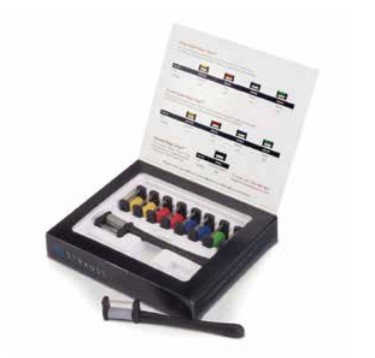Behind the Scenes: The Magic Strip System
Created to solve IPR procedure challenges for clinicians, the Magic Strip System is a groundbreaking addition to restorative dentistry
Dentists often face challenges when performing interproximal reduction (IPR) on tight spaces, when finishing composites, as well as when cleaning and removing excess cement. Arye Shahar, the President of Strauss Diamond Instruments, witnessed a clinician face these obstacles firsthand and decided to do something about it.
Shahar, the President of Strauss Diamond Instruments, witnessed a clinician face these obstacles firsthand and decided to do something about it.
“I wanted to create the Magic Strip after seeing my children’s orthodontist struggle when performing IPR, and seeing the discomfort on my child’s face,” explained Shahar.
Shahar began to learn more about the IPR process and spent time with his children’s orthodontist to figure out a solution to this problem. “I saw many different strips in his clinic, but I wanted to make something unique so that he could perform procedures without difficulty, and so his patients would be comfortable during IPR,” shared Shahar.
Developing the Product
The Magic Strip System’s unique features offer clinicians a tool for easy interproximal contouring and finishing. By using the system’s color-coded, diamond-impregnated strips in the order provided, clinicians can create accurate interproximal spaces and fi nish composites without the usual challenges.
“The secret of the Magic Strip is the high-quality handle,” said Shahar. “It enables users to control the strip from the outside of the patient’s mouth, eliminating the risk of finger injuries and making contact work as easy as holding a pen.”
Shahar worked with his engineer for a few months to create an adjustable strip with an ergonomic handle. "That led to the next generation of the unique Guided Magic Strip that makes inserting between tight spaces a breeze when starting the process of IPR,” said Shahar.
The Magic Strips’ adjustable head allows clinicians to select a desired level of tightness and curvature with the twist of a knob. By radically increasing the level of control throughout contouring and fi nishing procedures, Shahar and his team have substantially reduced the likelihood of patient injury while simultaneously easing the workload of the clinician.
“For dentists to have the best clinical outcome, they must follow each step from start to finish,” explained Shahar.
“The strips are available from 0.08 to 0.50 mm, and the kits are a guide for IPR to be performed correctly and in a timely manner.” The strips' colors represent their thickness. Following the steps allows the dentist to use the correct sizes and achieve the desired results for any procedure. The result is a better patient experience and reduced stress for the clinician.




